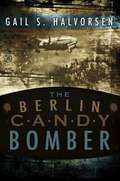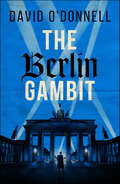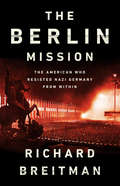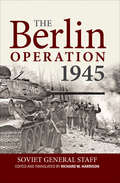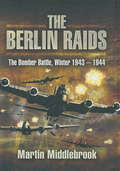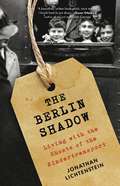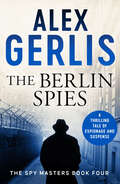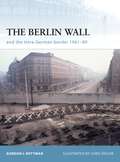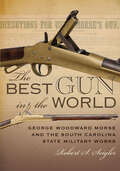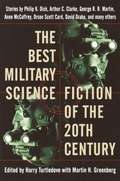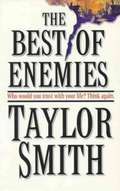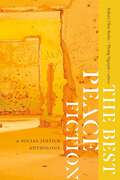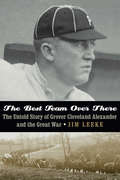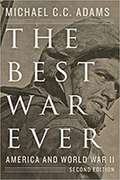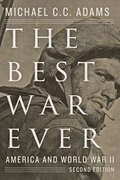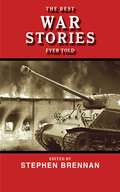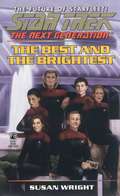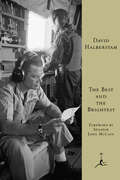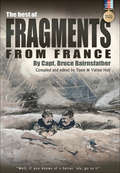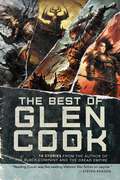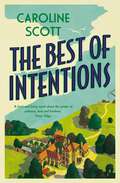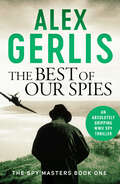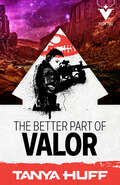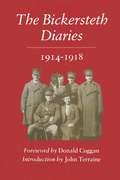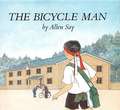- Table View
- List View
The Berlin Candy Bomber
by Gail HalvorsenThe Berlin Candy Bomber is a love story -- how two sticks of gum and one man's kindness to the children of a vanquished enemy grew into an epic of goodwill spanning the globe, and touching the hearts of millions in both Germany and America.
The Berlin Gambit: A page-turning WWII thriller based on true events
by David O'Donnell"[a] pacy debut set in 1941 Berlin and based on real Second World War events...Riveting." — Sunday Post The Reich will protect its secrets. 1942, Berlin. After Police Chief Investigator Rolf Schneider is summoned to a meeting with Himmler and tasked with investigating the assassination of Heydrich, he exposes a web of corruption and secrecy involving the highest-ranking figures in the Reich. Schneider is faced with an agonising dilemma, for the secret he discovers is both the only thing that can save his life and what will mark him down for certain death. His choice propels him into a desperate race against the clock, one in which he must travel to the very heart of darkness. Based around real World War II events. For fans of Philip Kerr, Robert Harris and Volker Kutscher.
The Berlin Mission: The American Who Resisted Nazi Germany from Within
by Richard BreitmanAn unknown story of an unlikely hero--the US consul who best analyzed the threat posed by Nazi Germany and predicted the horrors to comeIn 1929, Raymond Geist went to Berlin as a consul and handled visas for emigrants to the US. Just before Hitler came to power, Geist expedited the exit of Albert Einstein. Once the Nazis began to oppress Jews and others, Geist's role became vitally important. It was Geist who extricated Sigmund Freud from Vienna and Geist who understood the scale and urgency of the humanitarian crisis.Even while hiding his own homosexual relationship with a German, Geist fearlessly challenged the Nazi police state whenever it abused Americans in Germany or threatened US interests. He made greater use of a restrictive US immigration quota and secured exit visas for hundreds of unaccompanied children. All the while, he maintained a working relationship with high Nazi officials such as Heinrich Himmler, Reinhard Heydrich, and Hermann Göring.While US ambassadors and consuls general cycled in and out, the indispensable Geist remained in Berlin for a decade. An invaluable analyst and problem solver, he was the first American official to warn explicitly that what lay ahead for Germany's Jews was what would become known as the Holocaust.
The Berlin Operation, 1945: The Red Army's Offensive Operations In Poland And Eastern Germany 1945
by Soviet General Staff Richard W. HarrisonBerlin Operation, 1945, tells the story of the Red Armys penultimate offensive operation in the war in Europe. Here the forces of three fronts (Second and First Belorussian and First Ukrainian) forced the Oder River and surrounded the defenders of the German capital, reduced the city and drove westward to link up with the Western allies in central Germany. This is another in a series of studies compiled by the Soviet Army General Staff, which during the postwar years set itself the task of gathering and generalizing the experience of the war for the purpose of training the armed forces higher staffs in the conduct of large-scale offensive operations. The study is divided into three parts. The first contains a brief strategic overview of the situation, as it existed by the spring of 1945, with special emphasis on German preparations to meet the inevitable Soviet attack. This section also includes an examination of the decisions by the Stavka of the Supreme High Command on the conduct of the operation. As usual, the fronts materiel-technical and other preparations for the offensive are covered in great detail. These include plans for artillery, artillery and engineer support, as well as the work of the rear services and political organs and the strengths, capabilities and tasks of the individual armies. Part two deals with the Red Armys breakthrough of the Germans Oder defensive position up to the encirclement of the Berlin garrison. This covers the First Belorussian Fronts difficulty in overcoming the defensive along the Seelow Heights along the direct path to Berlin, as well as the First Ukrainian Fronts easier passage over the Oder and its secondary attack along the Dresden axis. The Second Belorussian Fronts breakthrough and its sweep through the Baltic littoral is also covered. Part three covers the intense fighting to reduce the citys defenders from late April until the garrisons surrender on 2 May, as well as operations in the area up to the formal German capitulation. This section contains a number of detailed descriptions of urban fighting at the battalion and regimental level. It closes with conclusions about the role of the various combat arms in the operation.
The Berlin Raids: The Bomber Battle, Winter 1943–1944
by Martin MiddlebrookA &“meticulously documented&” account that covers the RAF&’s controversial attempt to end World War II by the aerial bombing of Berlin (Kirkus Reviews). The Battle of Berlin was the longest and most sustained bombing offensive against one target in the Second World War. Bomber Command Commander-in-Chief, Sir Arthur Harris, hoped to wreak Berlin from end to end and produce a state of devastation in which German surrender was inevitable. He dispatched nineteen major raids between August 1943 and March 1944—more than ten thousand aircraft sorties dropped over thirty thousand tons of bombs on Berlin. It was the RAF&’s supreme effort to end the war by aerial bombing. But Berlin was not destroyed and the RAF lost more than six hundred aircraft and their crews. The controversy over whether the Battle of Berlin was a success or failure has continued ever since. Martin Middlebrook brings to this subject considerable experience as a military historian. In preparing his material he collected documents from both sides (many of the German ones never before used); he has also interviewed and corresponded with over four hundred of the people involved in the battle and has made trips to Germany to interview the people of Berlin and Luftwaffe aircrews. He has achieved the difficult task of bringing together both sides of the Battle of Berlin—the bombing force and the people on the ground—to tell a coherent, single story. &“His straightforward narrative covers the 19 major raids, with a detailed description of three in particular, and includes recollections by British and German airmen as well as German civilians who weathered the storm.&” —Publishers Weekly
The Berlin Shadow: Living with the Ghosts of the Kindertransport
by Jonathan LichtensteinA deeply moving memoir that confronts the defining trauma of the twentieth century, and its effects on a father and son. In 1939, Jonathan Lichtenstein's father Hans escaped Nazi-occupied Berlin as a child refugee on the Kindertransport. Almost every member of his family died after Kristallnacht, and, upon arriving in England to make his way in the world alone, Hans turned his back on his German Jewish culture. Growing up in post-war rural Wales where the conflict was never spoken of, Jonathan and his siblings were at a loss to understand their father's relentless drive and sometimes eccentric behavior. As Hans enters old age, he and Jonathan set out to retrace his journey back to Berlin. Written with tenderness and grace, The Berlin Shadow is a highly compelling story about time, trauma, family, and a father and son's attempt to emerge from the shadows of history.
The Berlin Spies (Spy Masters)
by Alex GerlisThe Second World War is coming to a close. But their fight is just beginning...Berlin, 1945: A group of Nazis frantically plot the next steps for their country. SS recruits gather east of the city for an audacious yet ill-fated mission to bring about a Fourth Reich.Three decades later, a young British diplomat in East Berlin is compromised after falling into a honey-trap. He contacts Major Edgar, a veteran British spymaster, who is drawn into an unlikely alliance with his old adversary, Viktor Krasotkin.Soon they are plunged into a world of Nazi war criminals and double agents. With nobody to trust, they must rely on each other. But as Cold War tensions rise, the cracks begin to show.The thrilling final novel in the Spies series, with an astonishing twist, perfect for fans of Jack Higgins, Frederick Forsyth and John le Carré.
The Berlin Wall and the Intra-German Border 1961-89
by Gordon Rottman Chris TaylorThe border between East and West Germany was closed on 26 May 1953. On 13 August 1961 crude fences and walls were erected around West Berlin: the Berlin Wall had been created. The Wall encircled West Berlin for a distance of 155km, and its barriers and surveillance systems evolved over the years into an advanced obstacle network. The Intra-German Border ran from the Baltic Sea to the Czechoslovak border for 1,381km, and was where NATO forces faced the Warsaw Pact for the 45 years of the Cold War. This book examines the international situation that led to the establishment of the Berlin Wall and the IGB, and discusses how these barrier systems were operated, and finally fell.
The Best Gun in the World: George Woodward Morse and the South Carolina State Military Works
by Robert S. SeiglerA thoroughly researched account of weapons innovation and industrialization in South Carolina during the Civil War and the man who made it happen.A year after seceding from the Union, South Carolina and the Confederate States government faced the daunting challenge of equipping soldiers with weapons, ammunition, and other military implements during the American Civil War. In The Best Gun in the World, Robert S. Seigler explains how South Carolina created its own armory and then enlisted the help of a weapons technology inventor to meet the demand. Seigler mined state and federal factory records, national and state archives, and US patents for detailed information on weapons production, the salaries and status of free and enslaved employees, and other financial records to reveal an interesting, distinctive story of technological innovation and industrialization in South Carolina.George Woodward Morse, originally from New Hampshire, was a machinist and firearms innovator, who settled in Louisiana in the 1840s. He invented a reliable breechloading firearm in the mid-1850s to replace muzzleloaders that were ubiquitous throughout the world. Essential to the successful operation of any breechloader was its ammunition, and Morse perfected the first metallic, center-fire, pre-primed cartridge, his most notable contribution to the development of modern firearms.The US War Department tested Morse rifles and cartridges prior to the beginning of the Civil War and contracted with the inventor to produce the weapons at Harpers Ferry Armory. However, when the war began, Morse, a slave-holding plantation owner, determined that he could sell more of his guns in the South. The South Carolina State Military Works originally designed to cast cannon, produced Morse’s carbine and modified muskets, brass cartridges, cartridge boxes, and other military accoutrements. The armory ultimately produced only about 1,350 Morse firearms. For the next twenty years, Morse sought to regain his legacy as the inventor of the center-fire brass cartridges that are today standard ammunition for military and sporting firearms.“Does justice to one of the greatest stories in American firearms history. If George Woodward Morse had not sided with the Confederacy, his name might be as famous today as Colt or Winchester.” —Gordon L. Jones, Atlanta History Center “Excellent and well-researched.” —Patrick McCawley, South Carolina Department of Archives and History“For connoisseurs and scholars of military history (especially Civil War), history of technology, or Southern/South Carolina history, this is a must-read and reference volume pertaining to a previously little-known aspect of the nineteenth century that had a far-reaching impact in the manner wars would be fought by soldiers decades later.” —Barry L. Stiefel, College of Charleston
The Best Military Science Fiction of the 20th Century
by Harry Turtledove Martin H. GreenbergExplosive battles fought across the boundaries of time and space and on the frontiers of the human mind. Science fiction's finest have yielded this definitive collection featuring stories of warfare, victory, conquest, heroism, and overwhelming odds.
The Best Of Enemies
by Taylor SmithA tranquil New England town is rocked to its core when a young college co-ed is linked to a devastating crime and then goes missing. Innocent or guilty, someone thinks she knows too much. One woman, who believes in the girl's innocence, is determined to find her before she's silenced--forever.
The Best Peace Fiction: A Social Justice Anthology
by Robert Olen Butler Phong NguyenIn the first anthology of its kind, Robert Olen Butler and Phong Nguyen assemble an astounding collection of stories that cause readers to contemplate war, peace, and social justice in a new light. The fourteen stories featured in this volume explore the varied and often unexpected outcomes of violence. The authors explore the tragedies that occur closer to home—not on military battlefields but rather in places that are never meant to be battlefields, like schools and churches. The fiction reveals the violence that renders our most sacred and seemingly safest of places vulnerable.Not a utopian project, this book asks whether literature has a role in furthering the ongoing pursuit of peace and justice for all. While exploring tragedy, these stories also offer hope for healing, illuminating how people can move forward from the moments when their lives change and how they can regain and reshape safe spaces to find solace.
The Best Team Over There: The Untold Story of Grover Cleveland Alexander and the Great War
by Jim LeekeGrover Cleveland Alexander was one of the greatest pitchers in baseball history, with 373 career victories during twenty seasons in the Major Leagues. Elected into the National Baseball Hall of Fame in 1938, the right-hander remains a compelling—and tragic—figure. &“Pete&” Alexander&’s military service during World War I was the demarcation line between his great seasons with the Philadelphia Phillies and his years of struggle and turmoil with the Chicago Cubs and the St. Louis Cardinals after the Great War. Indeed, Alexander&’s service during World War I has all but been forgotten, even though it dramatically changed his life—and his game. Alexander served in the 342nd Field Artillery Regiment, which included big leaguers and star athletes among its officers and men. Naturally, the regiment fielded an outstanding baseball team, but it also faced hard service during the final weeks of the war. After the armistice in November 1918, the unit undertook occupation duty in Germany.The Best Team Over There examines this crucial period closely: where Alexander was stationed, how he was trained, how he withstood the effects of combat and shelling, how he interacted with his fellow athletes and soldiers, and how the war changed his baseball career, revealing for the first time the little-known details of this critical stage in the legendary pitcher&’s life and career. We can&’t truly understand Alexander and his enduring appeal to baseball fans without also understanding his life as a gunner and soldier.
The Best War Ever: America And World War II (The American Moment)
by Michael C. C. AdamsThe most readable―and searingly honest―short book ever written on this pivotal conflict. Was World War II really such a “good war”? Popular memory insists that it was, in fact, “the best war ever.” After all, we knew who the enemy was, and we understood what we were fighting for. The war was good for the economy. It was liberating for women. A battle of tanks and airplanes, it was a “cleaner” war than World War I. Although we did not seek the conflict―or so we believed―Americans nevertheless rallied in support of the war effort, and the nation’s soldiers, all twelve million of them, were proud to fight. But according to historian Michael C. C. Adams, our memory of the war era as a golden age is distorted. It has left us with a misleading―even dangerous―legacy, one enhanced by the nostalgia-tinged retrospectives of Stephen E. Ambrose and Tom Brokaw. Disputing many of our common assumptions about the period, Adams argues in The Best War Ever that our celebratory experience of World War II is marred by darker and more sordid realities. In the book, originally published in 1994, Adams challenges stereotypes to present a view of World War II that avoids the simplistic extremes of both glorification and vilification. The Best War Ever charts the complex diplomatic problems of the 1930s and reveals the realities of ground combat: no moral triumph, it was in truth a brutal slog across a blasted landscape. Adams also exposes the myth that the home front was fully united behind the war effort, demonstrating how class, race, gender, and age divisions split Americans. Meanwhile, in Europe and Asia, shell-shocked soldiers grappled with emotional and physical trauma, rigorously enforced segregation, and rampant venereal disease. In preparing this must-read new edition, Adams has consulted some seventy additional sources on topics as varied as the origins of Social Security and a national health system, the Allied strategic bombing campaign, and the relationship of traumatic brain injuries to the adjustment problems of veterans. The revised book also incorporates substantial developments that have occurred in our understanding of the course and character of the war, particularly in terms of the human consequences of fighting. In a new chapter, “The Life Cycle of a Myth,” Adams charts image-making about the war from its inception to the present. He contrasts it with modern-day rhetoric surrounding the War on Terror, while analyzing the real-world consequences that result from distorting the past, including the dangerous idea that only through (perpetual) military conflict can we achieve lasting peace.
The Best War Ever: America and World War II (The American Moment)
by Michael C. AdamsThe most readable—and searingly honest—short book ever written on this pivotal conflict.Was World War II really such a "good war"? Popular memory insists that it was, in fact, "the best war ever." After all, we knew who the enemy was, and we understood what we were fighting for. The war was good for the economy. It was liberating for women. A battle of tanks and airplanes, it was a "cleaner" war than World War I. Although we did not seek the conflict—or so we believed—Americans nevertheless rallied in support of the war effort, and the nation's soldiers, all twelve million of them, were proud to fight. But according to historian Michael C. C. Adams, our memory of the war era as a golden age is distorted. It has left us with a misleading—even dangerous—legacy, one enhanced by the nostalgia-tinged retrospectives of Stephen E. Ambrose and Tom Brokaw. Disputing many of our common assumptions about the period, Adams argues in The Best War Ever that our celebratory experience of World War II is marred by darker and more sordid realities. In the book, originally published in 1994, Adams challenges stereotypes to present a view of World War II that avoids the simplistic extremes of both glorification and vilification. The Best War Ever charts the complex diplomatic problems of the 1930s and reveals the realities of ground combat: no moral triumph, it was in truth a brutal slog across a blasted landscape. Adams also exposes the myth that the home front was fully united behind the war effort, demonstrating how class, race, gender, and age divisions split Americans. Meanwhile, in Europe and Asia, shell-shocked soldiers grappled with emotional and physical trauma, rigorously enforced segregation, and rampant venereal disease.In preparing this must-read new edition, Adams has consulted some seventy additional sources on topics as varied as the origins of Social Security and a national health system, the Allied strategic bombing campaign, and the relationship of traumatic brain injuries to the adjustment problems of veterans. The revised book also incorporates substantial developments that have occurred in our understanding of the course and character of the war, particularly in terms of the human consequences of fighting. In a new chapter, "The Life Cycle of a Myth," Adams charts image-making about the war from its inception to the present. He contrasts it with modern-day rhetoric surrounding the War on Terror, while analyzing the real-world consequences that result from distorting the past, including the dangerous idea that only through (perpetual) military conflict can we achieve lasting peace.
The Best War Stories Ever Told (Best Stories Ever Told)
by Stephen BrennanThis is a truly incredible collection of stories about the battles of war, both on the front lines and behind the scenes. The authors range from ancient scribes like Julius Caesar to more modern masters like Theodore Roosevelt and Stephen Crane--you’ll even find a story from the King James Bible to make this experience truly complete! These stories capture the dizzying variety of feelings and experiences that war inspires, from the devastating to the inspiring. They are thought-provoking, entertaining, and disturbing, but always compelling. Whatever your feelings are about war, you’ll find that these stories will teach you something you didn't know about military history, stir up debate, and provoke conversation. This title is part of Skyhorse’s respected The Best Stories series, each of which is selectively edited and hand-crafted to include only the best stories from the best writers of the genre.
The Best and the Brightest
by Susan WrightEvery year, Starfleet Academy in San Francisco attracts many of the most talented and ambitious young people in the Federation. They come from all over the Alpha Quadrant, from hundreds of worlds and species, to prepare themselves for the challenges of the final frontier. Meet a new generation of cadets: a newly joined Trill just beginning the first of many lives; a Bajoran Vedek who finds himself torn between his vows and an unspoken love; a reckless young man fond of pushing the limits; a feline alien raised among humans; a brilliant but immature young woman with a lot to learn; and a native-born Earth woman with a talent for engineering. Together they will learn about courage, life, teamwork, and themselves. Their future is just beginning -- but one of them will not survive!
The Best and the Brightest (Modern Library Classics Ser.)
by David HalberstamDavid Halberstam&’s masterpiece, the defining history of the making of the Vietnam tragedy, with a new Foreword by Senator John McCain."A rich, entertaining, and profound reading experience.&”—The New York Times Using portraits of America&’ s flawed policy makers and accounts of the forces that drove them, The Best and the Brightest reckons magnificently with the most important abiding question of our country&’ s recent history: Why did America become mired in Vietnam, and why did we lose? As the definitive single-volume answer to that question, this enthralling book has never been superseded. It is an American classic.Praise for The Best and the Brightest&“The most comprehensive saga of how America became involved in Vietnam. . . . It is also the Iliad of the American empire and the Odyssey of this nation&’s search for its idealistic soul. The Best and the Brightest is almost like watching an Alfred Hitchcock thriller.&”—The Boston Globe&“Deeply moving . . . We cannot help but feel the compelling power of this narrative. . . . Dramatic and tragic, a chain of events overwhelming in their force, a distant war embodying illusions and myths, terror and violence, confusions and courage, blindness, pride, and arrogance.&”—Los Angeles Times&“A fascinating tale of folly and self-deception . . . [An] absorbing, detailed, and devastatingly caustic tale of Washington in the days of the Caesars.&”—The Washington Post Book World&“Seductively readable . . . It is a staggeringly ambitious undertaking that is fully matched by Halberstam&’s performance. . . . This is in all ways an admirable and necessary book.&”—Newsweek&“A story every American should read.&”—St. Louis Post-Dispatch
The Best of Fragments from France
by Bruce BairnsfatherA collection of British cartoons featuring Old Bill, “one of the best-loved characters of World War I,” created by a solider on the front lines (Warfare History Network).Bruce Bairnsfather was the most famous cartoonist of the First World War and his soldier characters Old Bill, Bert and Alf, faced with sardonic good humor everything that the Germans, the mud and their officers could throw at them. However, Bruce (known by some as The Man Who Won the War) never received the acclaim that he deserved for the morale boost that his cartoons gave to the troops at the front and to the people back at home. The 50th Anniversary of Bairnsfather’s death on 29 September 2009 offered an opportunity to redress the balance, and acknowledging it in combination with raising funds for Help for Heroes (H4H) seemed to be most appropriate.The cartoons reproduced in this collection were originally drawn for The Bystander, a popular weekly magazine, in which they appeared each Tuesday throughout most of the Great War. Their effect on the public was totally unexpected, and so dramatic that Bystander sales soared. The organization, with unerring good judgement, decided it had a winner in Bairnsfather, and published the first 43 of his cartoons in an anthology. It was produced in February 1916, given the name Fragments from France and sold for 1s. The success of the Fragments magazines was such that edition followed edition in rapid succession and at least eleven editions were published. Leafing through these pages, the reader will soon understand their tremendous popularity and success which have withstood the test of time.
The Best of Glen Cook: 18 Stories from the Author of The Black Company and The Dread Empire
by Glen CookThe best short fiction of legendary author Glen Cook (The Black Company, the Dread Empire) is collected into a new volume.For over forty years, Glen Cook has been among the most well-known, influential, and widely respected authors in science fiction and fantasy. Through classic series such as The Black Company, Garrett P.I., the Dread Empire, Starfishers, Darkwar, and more, his gritty, down-to-earth style left an indelible impression on his readers around the world, forever shifting the genre landscape and carving out his place as a pioneering icon.The Best of Glen Cook collects eighteen of his greatest stories—as chosen and introduced by the author himself—including a new, never-before-published Black Company novelette. With works set in all of his most famous series, these tales of science fiction and fantasy offer both the perfect way for longtime fans to trace Cook&’s history and for new readers to become familiar with one of the finest genre authors of the twentieth century.
The Best of Intentions: A 'fond and funny' story of friendship, community and staying true to yourself.
by Caroline ScottCharming, nostalgic and brimming with optimism – a sparkling story of friendship, community and staying true to yourself for fans of Lissa Evans and AJ Pearce. 'Turbulence and tribulation in paradise... A fond and funny novel about the power of patience, love and kindness' Fiona Valpy 1932: When gardener Robert Bardsley arrives at Anderby Hall, an Elizabethan manor house in the Gloucestershire countryside, it is home to &‘Greenfields&’, a community of artists and idealists. Robert has been employed to revive Anderby&’s famous roses and restore the topiary garden, but he also soon befriends the other residents: from colourful neighbour Trudie, who makes a formidable cocktail and keeps her late-fiancé&’s ashes on the mantelpiece, to composer Daniel, recovering from the horrors of the Great War. The only person he can&’t win over is Anderby&’s schoolteacher, Faye, who finds him . . . perfectly vexing. But just as Robert starts to feel at home, the residents discover that the old orchard has been sold to a property developer who has plans for an estate of Tudorbethan bungalows. Can they find a way to keep their creative community alive or will the new housing development put an end to the spirit of Greenfields? 'An ode to kindness, authenticity and optimism - just what we need at the moment!' Caroline Bishop '[A] warm and engaging story of community, friendship and resilience' Anita Frank 'How to live your best life is a topic of perennial fascination. Caroline Scott explores the challenges facing a utopian community of the interwar period in a beautifully written and wonderfully atmospheric story. It's hard to put down&’ Rachel Hore 'As clouds gather on the distant European horizon in the 1930s, the residents of Anderby Hall remind us of the importance of community, kindness and optimism' Flora Johnston '[A] wonderful, atmospheric read that I really couldn't tear myself away from. It's so beautifully written, with gorgeous, evocative descriptions of orchards, gardens, the seasons and an English country house. I was transported!&’ Tracy Rees 'A wonderful novel about the power of a creative community to heal and educate' Suzanne Goldring
The Best of Our Spies (Spy Masters)
by Alex GerlisRanked #41 on Spycast's list of the Top 50 Best Spy Novels, as voted for by real-life intelligence operatives. The Allies have landed, the liberation of Europe has begun. In the Pas de Calais, Nathalie Mercier, a young British Special Operations Executive secret agent working with the French Resistance, disappears. In London, her husband Owen Quinn, an officer with Royal Navy Intelligence, discovers the truth about her role in the Allies' sophisticated deception at the heart of D-Day. Appalled but determined, Quinn sets off on a perilous hunt through France in search of his wife. Aided by the Resistance in his search, he makes good progress. But, caught up by the bitterness of the war and its insatiable appetite for revenge, he risks total destruction. Based on real events of the Second World War, this is a thrilling tale of international intrigue, love, deception and espionage, perfect for fans of Robert Harris, John le Carré and Len Deighton.
The Better Part of Valor (Confederation of Valor #2)
by Tanya HuffFrom bestselling author Tanya Huff comes a new novel in the Confederation series of military science fiction, blending action, intrigue, courage, and humor with more twists than a trip through Susumi space…Even if she was saving the Confederation at the time, Staff Sergeant Torin Kerr is aware that questioning a general’s parentage to his face was not a strategic career move. But she never imagined it would land her as senior NCO on a top-secret recon mission practically guaranteed to go sideways. The target is an unidentified alien ship the size of a station, floating dead in space. Most of her intel comes from a civilian salvage operator who’s bargained his way onto her landing party while making it clear he won’t be taking any orders. Best of all, the mission’s commanding officer is a politically connected captain so heroic his troops tend to end up dead.But as soon as Torin and her Marines set foot on the strange vessel, the rules change. This ship isn’t empty. Communications are down. And if they can’t get back to tell the Confederation what they’ve found out, all of the known galaxy is going to learn about it the hard way…
The Bickersteth Diaries: 1914-1918
by John Bickersteth Donald CogganThis book is a studiously edited version of the eleven volumes and more than three thousand pages of the diarist's original work. Ella Bickersteth began to put it together for her six sons, because one of them was in Australia at the outbreak of the 1914–18 war.The book reflects upon church and politics, theological musings and matter-of-fact details of how an anxious mother, who was also a busy vicar's wife, kept going through the huge upheaval of war.
The Bicycle Man
by Allen SayThe amazing tricks two American soldiers perform on a borrowed bicycle are a fitting finale for the school sports day festivities in a small village in occupied Japan.
